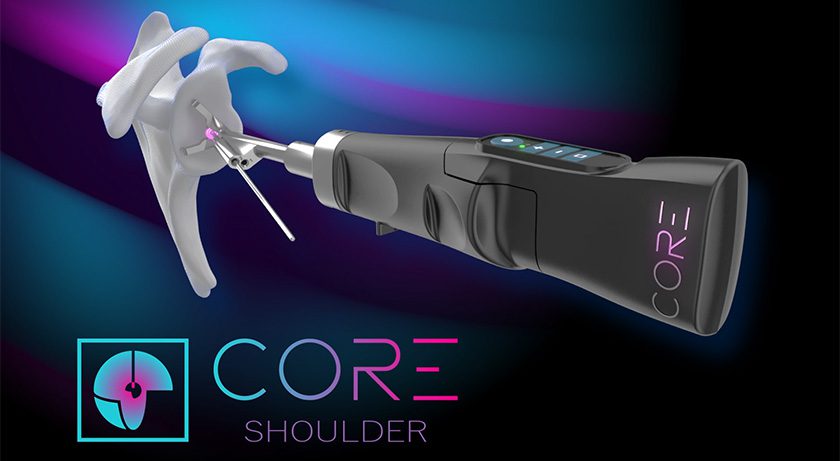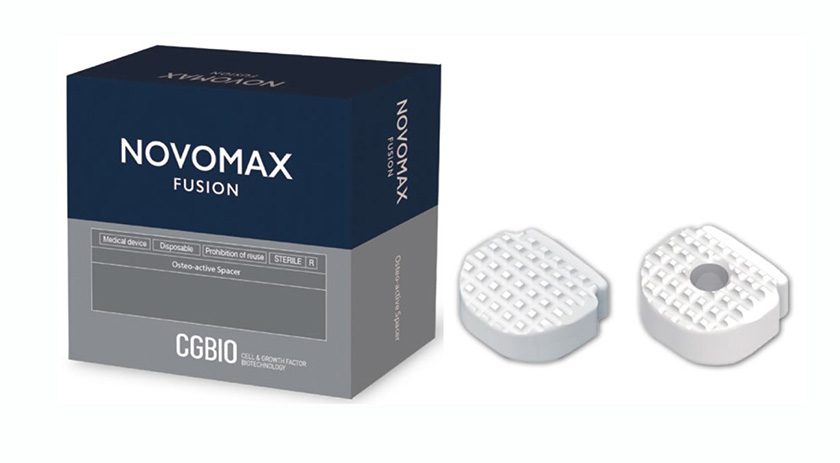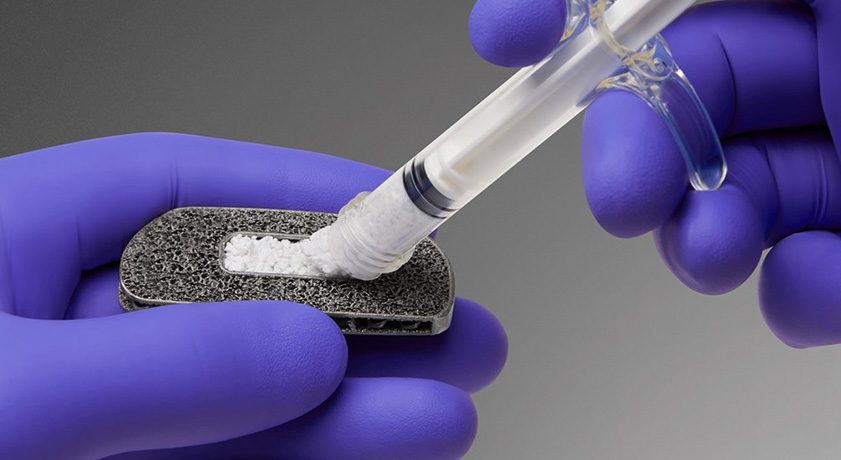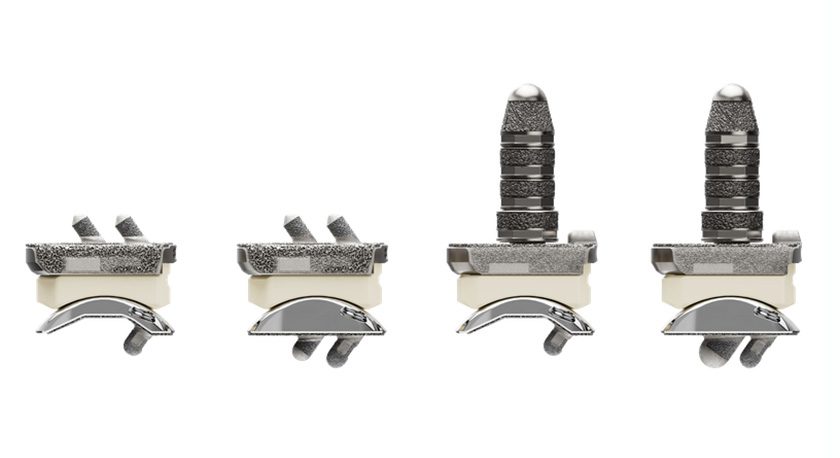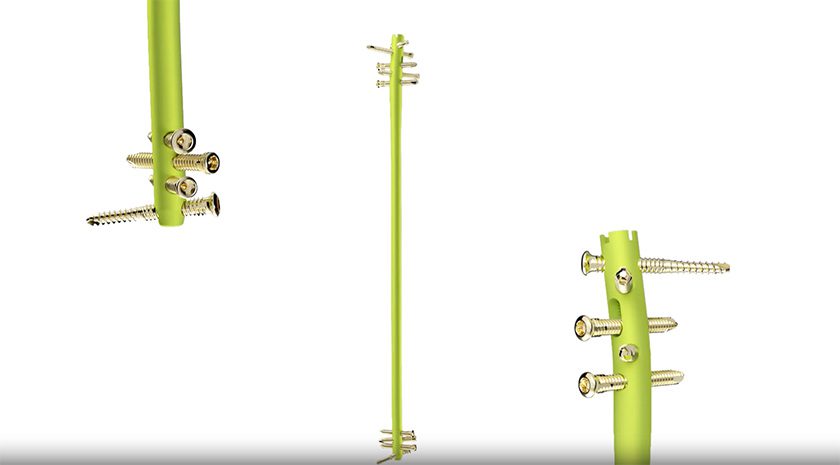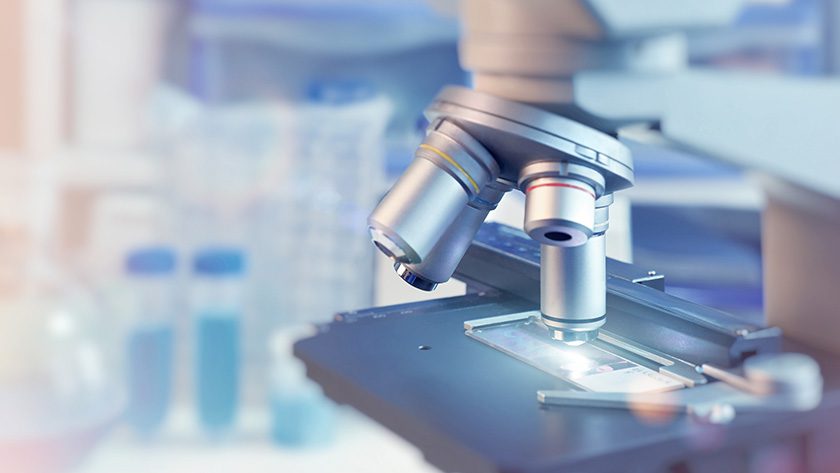

 Copy to clipboard
Copy to clipboard 
Results from an equine study indicate that tissue created in a lab to replace damaged knee cartilage is just as good, and in some ways better, than the current gold standard of using donor tissue.
The study compared EpiBone’s lab-grown tissue graft to donor tissue for repairing knee cartilage. Tissue created from donor stem cells, known as a tissue-engineered allogenic osteochondral graft, was implanted into the knee. It was compared to osteochondral allograft, which uses cadaver tissue. In most ways, the two grafts produced similar results, while the lab-grown replacement integrated better with the surrounding native cartilage.
The current solution, using tissue from cadavers, is limited by donor supply and requires sufficient storage. Currently, only about 2,000 to 3,000 of these procedures are performed in the U.S.
EpiBone’s process takes bone marrow stem cells and turns them into tissue, mimicking what happens naturally in the body. This study sought to compare the effectiveness of lab-created tissue to the current gold standard of using cadaver tissue.
“By growing cartilage in the lab from stem cells, we could eliminate supply chain constraints and potentially help more people,” said Sarindr “Ik” Bhumiratana, PhD, Co-founder and Chief Scientific Officer of EpiBone. “We have successfully demonstrated safety and efficacy in the study, and these results give us greater confidence that we are creating a product that could eventually become the gold standard of cartilage repair. Our next step is to test the product in a human clinical trial.”
Source: EpiBone
Results from an equine study indicate that tissue created in a lab to replace damaged knee cartilage is just as good, and in some ways better, than the current gold standard of using donor tissue.
The study compared EpiBone’s lab-grown tissue graft to donor tissue for repairing knee cartilage. Tissue created from donor stem cells, known as a...
Results from an equine study indicate that tissue created in a lab to replace damaged knee cartilage is just as good, and in some ways better, than the current gold standard of using donor tissue.
The study compared EpiBone’s lab-grown tissue graft to donor tissue for repairing knee cartilage. Tissue created from donor stem cells, known as a tissue-engineered allogenic osteochondral graft, was implanted into the knee. It was compared to osteochondral allograft, which uses cadaver tissue. In most ways, the two grafts produced similar results, while the lab-grown replacement integrated better with the surrounding native cartilage.
The current solution, using tissue from cadavers, is limited by donor supply and requires sufficient storage. Currently, only about 2,000 to 3,000 of these procedures are performed in the U.S.
EpiBone’s process takes bone marrow stem cells and turns them into tissue, mimicking what happens naturally in the body. This study sought to compare the effectiveness of lab-created tissue to the current gold standard of using cadaver tissue.
“By growing cartilage in the lab from stem cells, we could eliminate supply chain constraints and potentially help more people,” said Sarindr “Ik” Bhumiratana, PhD, Co-founder and Chief Scientific Officer of EpiBone. “We have successfully demonstrated safety and efficacy in the study, and these results give us greater confidence that we are creating a product that could eventually become the gold standard of cartilage repair. Our next step is to test the product in a human clinical trial.”
Source: EpiBone

You are out of free articles for this month
Subscribe as a Guest for $0 and unlock a total of 5 articles per month.
You are out of five articles for this month
Subscribe as an Executive Member for access to unlimited articles, THE ORTHOPAEDIC INDUSTRY ANNUAL REPORT and more.
JV
Julie Vetalice is ORTHOWORLD's Editorial Assistant. She has covered the orthopedic industry for over 20 years, having joined the company in 1999.


